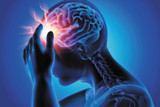Actovegin and Cerebrolysin in a complex treatment of patients with severe cerebral trauma

The most severe pathology in intensive care practice is a combined traumatic brain injury with damage to the limbs. Difficulty providing assistance for such patients consists in a complex lesion of vital organs, systems and pathological reactions arising in the patient's body.
We have carried out studies in 100 patients, having received craniocerebral trauma with injuries to the limbs. All age groups were taken into account, however the largest percentage falls in the age group 18-45 years old - 56% of cases, i.e. people of working age and physically healthy people.
The were various causes of concomitant traumatic brain injury and are ranked as follows:
- 1st place: traffic injuries - 76 patients (76%).
- 2nd place: falling from height - 16 patients (16%).
- 3rd place is: household injuries - 8 patients (8%).
The studies are brokendown into 4 degrees of severity:
- 1st degree - mild traumatic brain injury (brain concussion) in combination with mild injuries of the end-bones (cracked bones, dislocations, abrasions) occurred in 28 patients, 10 of them were in a state of shock.
- 2nd degree - severe traumatic brain injury (contusion, matoma in the presence of pronounced cerebral, stem and focal symptoms) in combination with minor limb injuries - in 6 patients, 4 of them in a state of shock.
- 3rd degree - a combination of mild traumatic brain injury with severe damage to the limbs (fractures in one segment one limb or multiple) - in 58 patients, of these, 30 were in shock.
- 4th degree - severe traumatic brain injury with severe limb injury - in 8 patients, of which all of them were in a state of shock.
Traumatic shock occurred in 52 patients (52%). 40 patients predominantly suffered from head injury which was easily diagnosed, in the remaining 60 patients, on the contrary, firstly it was the symptoms of damage to the limbs. In the case when the brain injury protrudes, a reactive state arises wihch makes it difficult to asses the damage. Damage to the limbs in case of mild traumatic brain injury can lead to the development of severe traumatic shock, against which
makes it difficult to recognize brain damage, i.e. "syndrome of mutual burdens ".
The treatment of patients was based on a complex measures aimed at combating bleeding, hypoxia, an increase in intracranial pressure, cerebral edema, impaired respiration and cardiovascular systems, the normalization of autonomic disorders. In the complex therapy of patients from the first hours of intensive care and anti- shock measures Actovegin and Cerebrolysin was administered to the patients. Actovegin's basic mechanism of action is aimed at increasing absorbtion of oxygen and glucose into cells and their consumption in pathological conditions of hypoxia and cerebral ischemia. Cerebrolysin helps to improve metabolism in the brain cells.
Methodology for using Actovegin and Cerebrolysin
Actovegin is administered intravenously at a dose of 1000 mg up to 4000 mg from the first hours of the patient's stay in intensive care. Cerebrolysin is administered intravenously in a dose from 10-30 ml in saline. This therapy was carried out for up to 5 days, until patients' condition improved. We first of all noted a significant decrease in the incidence of multiple organ failure and reducing the severity of it manifestations compared with the group of patients who did not receive Actovegin and Cerebrolysin. Among the results of the use of these drugs were neurotropic and neuroprotective effects, which can significantly reduce post-hypoxic and post-traumatic lesionsin the central nervous system.Our experience shows that early administration of Actovegin and Cerebrolysin in the basic treatment regimen for patients with concomitant traumatic brain injury causes a positive solid dynamics and leads to faster stabilization conditions even with a severe degree of damage.
Source: Journal of the National Scientific Center for Surgery. A.N. Syzganov, page 81.
Shegai L.V., City Clinical Hospital no. 1, Almaty, Kazakhstan
